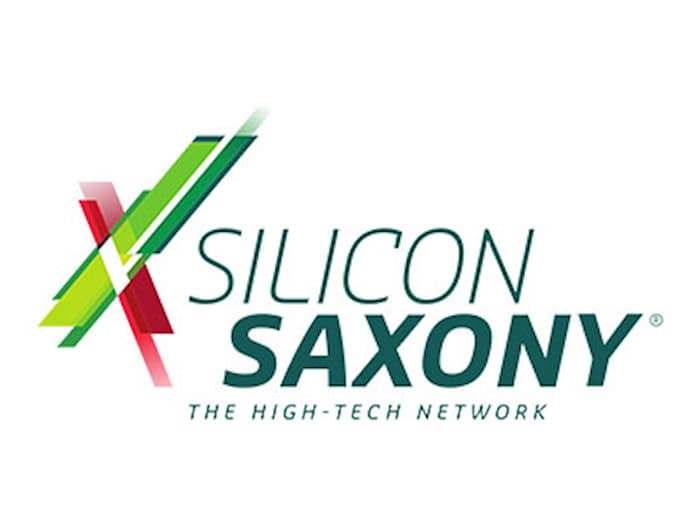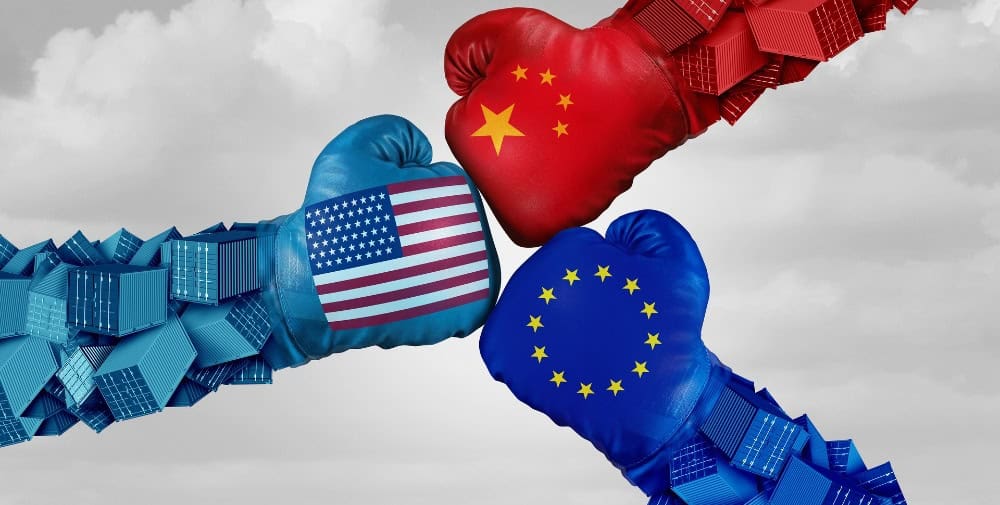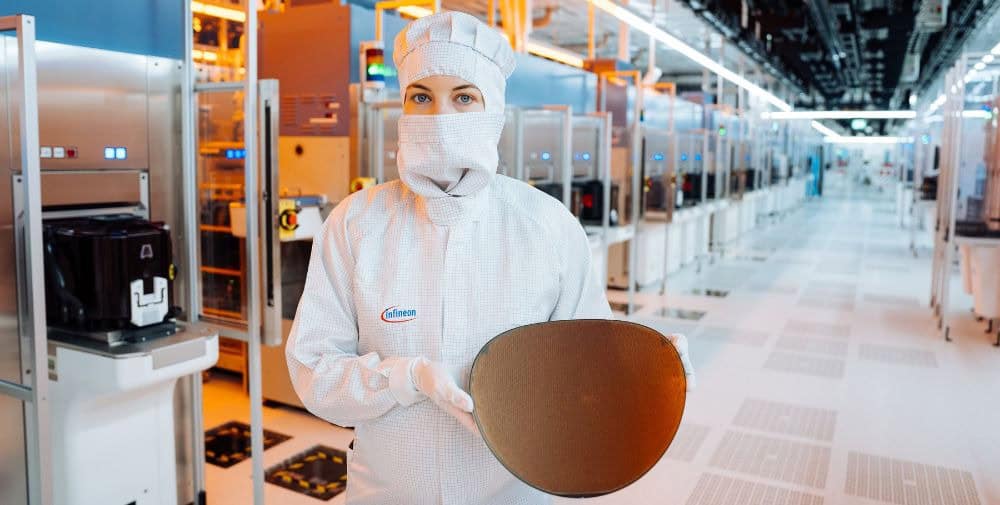Do you know the desire to protect yourself in advance of making a statement and soften any waves of misunderstanding that may arise? To protect yourself in a difficult environment that could give rise to a wide variety of opinions and not give people the feeling that you are the great teacher or that you are spreading a universal truth? The following text is such a case. So please bear with me if my experiences of the last few days, my insights or opinions gained from them do not correspond to yours. It is the view of a more or less outsider layman. My view. Therefore, please consider this text as a basis for discussion and as an opportunity to jointly classify what is currently happening in the world, especially in the field of microelectronics and high technology.

The past few days at SEMICON Europa and electronica were intense and left a lasting impression on me. The opening of the two leading trade fairs, the appearances of high-ranking representatives of the semiconductor industry, representatives of the European Union and the US administration, researchers, associations and analysts as well as the trade fair appearances of Chinese companies were already stirring for me. It is an ambivalent situation that is currently unfolding before our eyes. On the one hand, we are being swept away by positive news. This is about the growth of the semiconductor industry to one trillion dollars by 2030, about investment and funding successes, such as the establishment of ESMC in Dresden or Onsemi in the Czech Republic. New technological achievements, including in the field of artificial intelligence. And, last but not least, the constant call for closer international cooperation and coordination, which, for me at least, creates a pleasant sense of community. On the other hand, it is also about the current international conflicts from Taiwan to Ukraine. About deep global rifts between the USA, Europe and Asia. About missed opportunities, setbacks and the increasing isolation of individual nations, as can be expected soon in the case of the USA.
Against each other instead of with each other – more and more semiconductor nations are sealing themselves off
The world is currently going through a difficult phase, to put it diplomatically. And the microelectronics industry feels like it is right in the middle of it. Taiwan recently announced that it will not have its 2 nm technology produced outside Taiwan. Instead, the technology is to be used as a protective shield against China in order to maintain Taiwan’s sovereignty. South Korea, for its part, has recently announced that it wants to use its own billion-euro Chips Act to arm itself against a USA under Donald Trump’s leadership. Korean fears are great that the USA’s isolation from China could lead to an international price war in the semiconductor sector, which would threaten to leave Korean microelectronics manufacturers behind. These are just two examples that show the extent to which politicians are now interfering in individual industries without really understanding them. This impression has been reinforced over the past few days in a trade fair environment that previously appeared rather apolitical and purely innovation-driven.
A whole industry is currently becoming a pawn of international politics, of individual systems and nations, and this also applies to SEMICON Europa and electronica. Instead of working together to achieve the best for the world, the focus is increasingly on inhibiting, hindering or generally keeping others behind. A circumstance that does not fit in at all with microelectronics, which I have been following as an interested observer for over ten years and which has fascinated me ever since. An industry that is closely networked and interwoven on a global scale, and which repeatedly emphasizes and celebrates this fact. In which a multitude of nations and people of different nationalities continue to work hand in hand.
The industry shows solutions and ways to meet international challenges
This year, the key technological topics at the two leading trade fairs once again demonstrated the potential of the semiconductor industry. Once again, it became clear that microelectronics cannot go it alone and that the production of semiconductor products only works across borders and globally. In this context, the industry once again demonstrated its potential to change the world for the better. And it did so in 6.5 of Munich’s 18 exhibition halls. More than a third of all trade fair participations therefore revolved around microelectronics or its supplier industry. In other words, a key technology that makes electronics – from entertainment to automotive – possible in the first place.
In times when leading heads of state and decision-makers are still doubting or ignoring man-made climate change, it was also encouraging to see that at least the industry is continuing to set itself high goals in the areas of sustainability and decarbonization, exploring new ways to save resources, reduce carbon footprints and develop new technologies that not only make its own industry “greener” and more environmentally friendly. It was also about the exciting new possibilities of artificial intelligence, chiplets and advanced packaging. In other words, areas that demonstrate the importance, achievements and progress of a key sector, without which no economic, industrial or social sector can progress today.
Geopolitics is increasingly becoming a threat to Europe
In the same breath, however, the current geopolitical tensions to which the industry is exposed were also discussed. The resilience required for this. About supply chains that are crumbling or even threatening to tear apart. The “war” being waged in the area of skilled workers and talent. Yes, you read that correctly. War was the chosen term, which also resonated with the topic of promoting microelectronics and here gives a different, unattractive face to the chips acts that are gaining momentum worldwide – which are luring the industry to invest billions from Europe to Asia and North America.
It didn’t help much that a representative of the European Union estimated and celebrated the investments made in Europe to date – from Important Projects of Common European Interest (IPCEI) to the EU Chips Act – at 85 billion euros. This is certainly positive news for an industry that is steadily gaining in importance, but without a clear European semiconductor strategy it will not be able to achieve the desired sustainable success. Especially when these investments are obviously not made to build on European strengths and mitigate weaknesses, but only to achieve global market shares that are difficult to comprehend and to put other nations in their place.
Europe’s semiconductor market share is now only 7 to 8 percent
The EU still wants to increase the global market share of its own continental semiconductor production from 10 to 20 percent, as was once again announced by the EU representative Gustav Kalbe, who was present. The only problem is that shortly afterwards, during a panel discussion on the “Geopolitics of the semiconductor industry”, a microelectronics expert and an analyst put forward completely different figures. This is because Europe does not currently have a market share of 10 percent. It is more likely to be between 7 and 8 percent. This figure could rise to a maximum of 11 percent by the end of the decade. The 20 percent communicated by the EU, on the other hand, seems completely unrealistic, and not just since the announcement by Intel and ZF/Wolfspeed to postpone their own EU Chips Act projects on European soil for years.
Frédérique Le Grevés, President of ST Microelectronics France, also made an urgent request during the same panel, asking for the industry to be more intensively involved in funding programs and efforts such as the EU Chips Act. Not just to focus on unspecific targets, but to jointly agree on tangible and meaningful milestones and roadmaps. After all, the primary objective is to support and advance the industries and economic sectors based in Europe with the semiconductor products manufactured here. The representative of the U.S. Department of State and responsible for the US Chips Act, Virginia Kent, also listened with great interest, knowing full well that the US semiconductor efforts are already developing far more clout than the EU Chips Act has been able to achieve to date.
In the panels and forums, Chinese political representatives were nowhere to be found. This is astonishing to me, considering that China is currently the fastest growing semiconductor market and semiconductor production location in the world.
China outshines Europe and the USA – 108 new fabs worldwide are not enough
45 new semiconductor factories (fabs) have already been built here since 2023 or are scheduled to be built by 2027. By contrast, 12 new fabs in Europe and 18 new fabs in the USA in the same period seem almost unambitious. A total of 78 new fabs will be built across Asia by 2030 (as of November 2024) – including 11 in Japan and 11 in Taiwan. According to SEMI analyses, in addition to the 108 fabs already built or still under construction worldwide, a further 50 fabs would have to be built globally by 2030 in order to keep pace with the accelerating boom in artificial intelligence (AI). It remains to be seen how this will be achieved in increasingly closed markets and systems.
Semiconductor market to grow to one trillion dollars by 2030
The global semiconductor market is nevertheless expected to generate more than one trillion dollars by 2030. Complex topics ranging from the Internet of Things and artificial intelligence to the approaching quantum wave must be tackled together to achieve this. The question is increasingly how. Even if Europe and the USA are currently still working closely together, it is to be feared that this is likely to change in the coming months and years under the leadership of Donald Trump. As is already the case with China, there is likely to be more talk about each other than with each other. China did not even appear in most of the presentations shown at the trade fair over the past few days. However, there was constant talk of independence, resilience and personal responsibility. As if only one nation in the world was capable of tackling the challenges in the semiconductor industry alone.
The good news is that this will certainly not hinder the continued growth of the industry. Almost every nation is now investing heavily in its semiconductor expertise. Some with a plan and focused on their own needs. Others are a little less planned, but no less ambitious. The charts with enormous growth curves are therefore still not in danger. However, international cooperation, common goals, values and successes may be. It remains to be seen whether the current challenges can be solved by international consensus. The semiconductor industry is not the stumbling block – as it was recently during corona. Rather, politicians are increasingly influencing an industry that, more than any other economic sector, needs international cooperation like the air it breathes.
Semiconductor industry stands up to isolationist efforts and remains on the upswing
It was therefore consistently positive to see that the representatives of the industry are positioning themselves against this increasing trend of “us against them” over the past few days of the trade fair. Despite spatially isolated and in some cases consistently Chinese-branded exhibition halls. Despite political backlash and isolationist efforts. Despite war rhetoric and system battles. The semiconductor industry is and remains on the upswing. It is now up to the world’s leaders to focus more on international cooperation and not to abuse the semiconductor industry for their own purposes.
Because apart from the discord brought in by international politics, SEMICON Europa and electronica were and are outstanding examples of how international cooperation and business can work. The importance of international cooperation was and is particularly evident at the Silicon Saxony stand with its more than 50 exhibiting companies and institutions. People from all nations networked here, did business and initiated collaborations. The hope is correspondingly high that at some point politicians will also recognize that far more can be achieved together than against each other. After all, anyone who still thinks they can solve the challenges of our time alone or that they don’t need to worry about them hasn’t understood anything in the past decades.
_ _ _ _ _ _
Further links
👉 What does the Draghi report achieve? – Europe’s plans to compete with China and the USA
👉 The billion-dollar waiver and its reasons – Intel and ZF/Wolfspeed “postpone” EU Chips Act projects
👉 EU Chips Act: Good, but good enough?
_ _ _ _ _
Editor: Robert Krauße
_ _ _ _ _
Image: Canva



